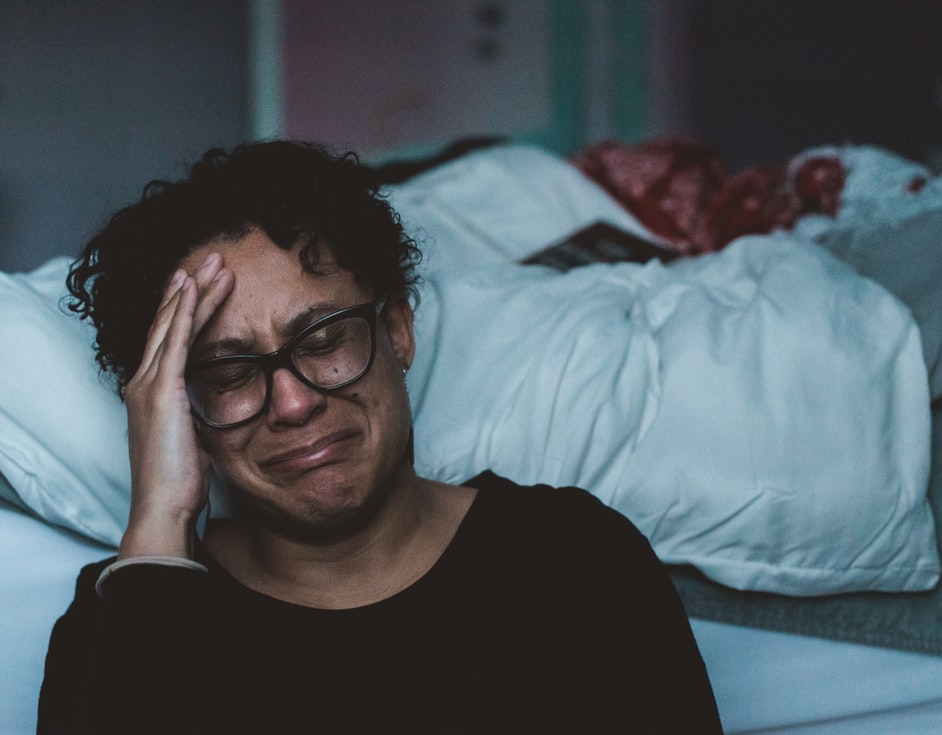What Do Actors Use When They Can’t Cry?
(By Jim Webb)

(Photo by Claudia on Unsplash)
Crying on cue is one of the most challenging skills an actor must master. While some performers can summon tears naturally, others struggle to reach that emotional depth in every scene. So, what do actors use when they can’t cry?
There are several techniques actors employ to evoke tears, ranging from psychological methods to artificial aids. This article explores various approaches actors take to generate convincing tears on screen or stage.
Psychological Techniques
1. Emotional Recall (Method Acting)
One of the most common techniques actors use is emotional recall, which is a fundamental part of the Stanislavski Method and Method Acting. This technique requires an actor to remember a deeply emotional event from their past and relive it in their mind to generate genuine tears.
Example: Anne Hathaway in Les Misérables
In Les Misérables (2012), Anne Hathaway played the tragic role of Fantine. To prepare for her emotional scenes, Hathaway used personal memories and immersed herself in the suffering of her character. She lost weight drastically and cut her hair on camera to enhance the realism of her breakdown.
2. Substitution Technique
Instead of recalling a personal memory, some actors imagine a scenario that could evoke sadness. They substitute their own experience with a fictional but plausible one that triggers deep emotions.
Example: Tom Hanks in Philadelphia
In Philadelphia (1993), Tom Hanks had to portray a man dying from AIDS. While he may not have personally experienced the disease, he substituted the scenario with experiences of loved ones suffering from illnesses, which helped him create an authentic emotional reaction.
3. Music as an Emotional Trigger
Music has a profound ability to evoke emotions. Some actors listen to a specific song before or during a scene to help them tap into a melancholic state.
Example: Natalie Portman in Jackie
In Jackie (2016), Natalie Portman used music to get into an emotional state before filming intense scenes. Listening to sorrowful classical music helped her internalize the grief of Jackie Kennedy.
Physical Techniques
4. Controlled Breathing and Facial Tension
Sometimes, actors manipulate their breathing patterns and facial expressions to mimic the physical symptoms of crying. This technique involves trembling lips, shallow breathing, and widening the eyes, which can trick the body into actually shedding tears.
Example: Leonardo DiCaprio in The Revenant
Leonardo DiCaprio used controlled breathing to reflect pain and despair in The Revenant (2015). His ability to control his facial tension and breaths helped him appear on the verge of tears even when actual tears were absent.
5. Blinking Less to Induce Tears
Blinking spreads moisture across the eye, preventing tears from forming. Some actors intentionally blink less to let their eyes dry out, making it easier for tears to well up.
Example: Viola Davis in Fences
Viola Davis, known for her powerful crying scenes, uses physical techniques to enhance her performances. In Fences (2016), she let tears naturally build by limiting her blinking and focusing on raw emotions.
Artificial Aids
6. Tear Stick or Menthol Vapor
When natural tears won’t come, actors often turn to tear sticks or menthol vapors. A tear stick is a wax-based product containing menthol, which irritates the eyes and causes tears to form. Similarly, menthol vapors are blown near an actor’s face to create a tearful effect.
Example: Daniel Kaluuya in Get Out
In Get Out (2017), Daniel Kaluuya had to deliver a scene where his character experiences paralyzing fear. He revealed in interviews that he used menthol vapor to enhance the tear production while still maintaining an emotional performance.
7. Eye Drops
Some actors use artificial tears or saline eye drops when they need to cry on cue. This method ensures visible tears without needing to summon deep emotions.
Example: Henry Cavill in Man of Steel
In Man of Steel (2013), Henry Cavill had to deliver emotional scenes as Superman. While he performed with intensity, eye drops were occasionally used to maintain tear consistency during long takes.
Psychological Preparation Before Filming
8. Isolation and Avoiding Distractions
Some actors prefer to isolate themselves before filming a crying scene. This technique helps them stay focused and emotionally prepared.
Example: Joaquin Phoenix in Joker
Joaquin Phoenix, known for his intense dedication to roles, isolated himself from cast and crew before filming emotional scenes in Joker (2019). This helped him maintain the emotional weight required for his performance.
9. Reading Emotional Letters or Watching Sad Clips
Actors sometimes read letters, poems, or watch sad videos to trigger emotions before stepping into a crying scene.
Example: Andrew Garfield in The Amazing Spider-Man 2
In The Amazing Spider-Man 2 (2014), Andrew Garfield had to cry during the death scene of Gwen Stacy. He prepared by reading old letters from loved ones and watching emotional videos to get into the right mindset.
Crying on cue is an essential skill for actors, and while some can cry naturally, others rely on various techniques and tools to make their performances believable. From emotional recall to artificial aids like menthol vapors and tear sticks, actors use whatever method works best for them. The ability to summon tears convincingly is a testament to their dedication and craft, ensuring that audiences connect with their performances on a deep emotional level.



